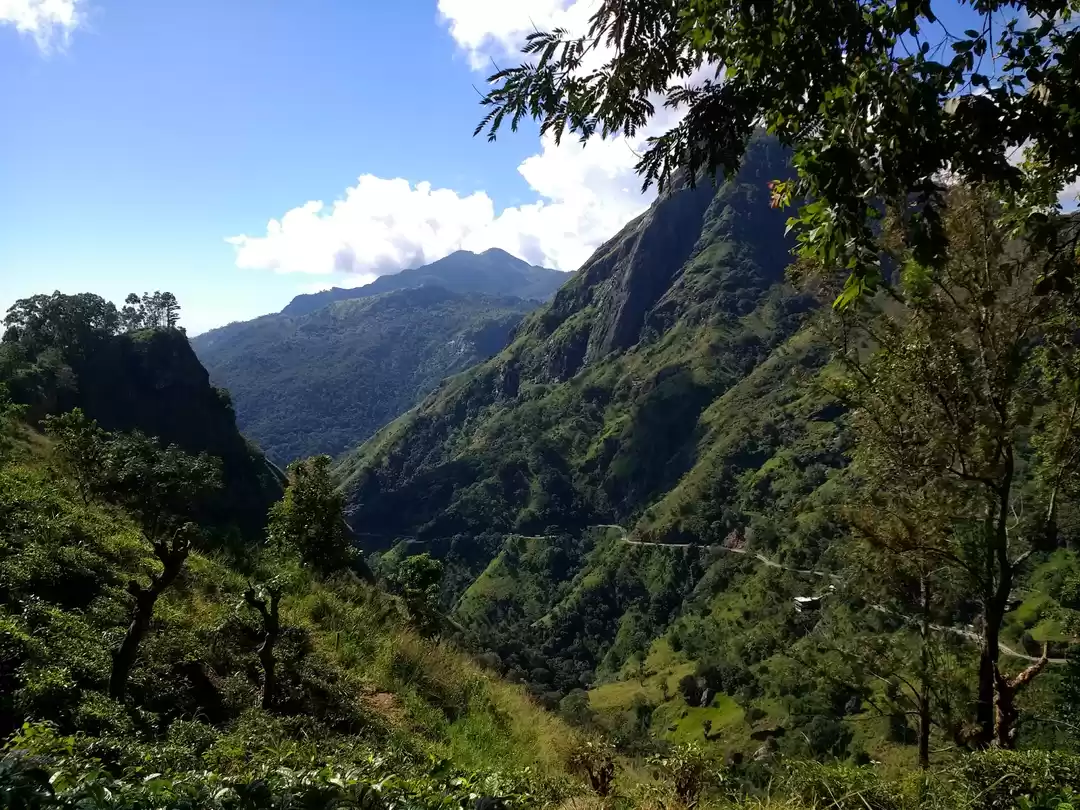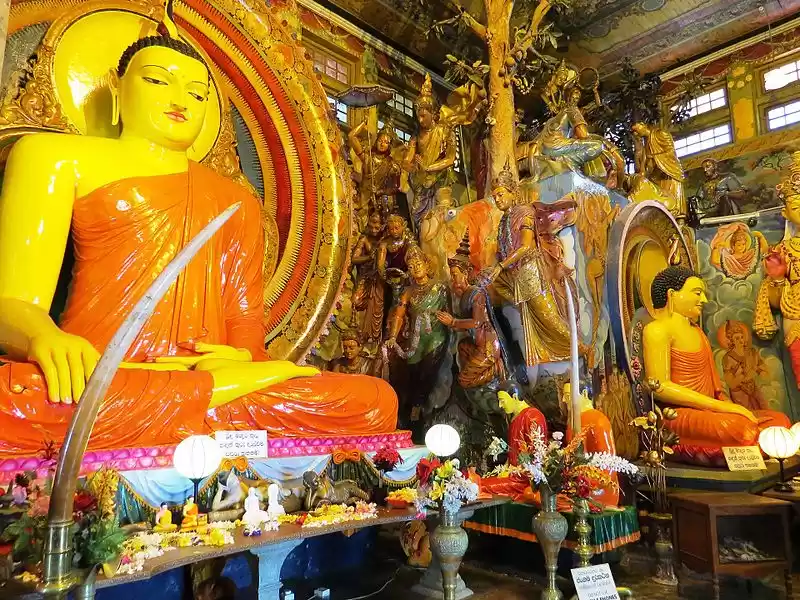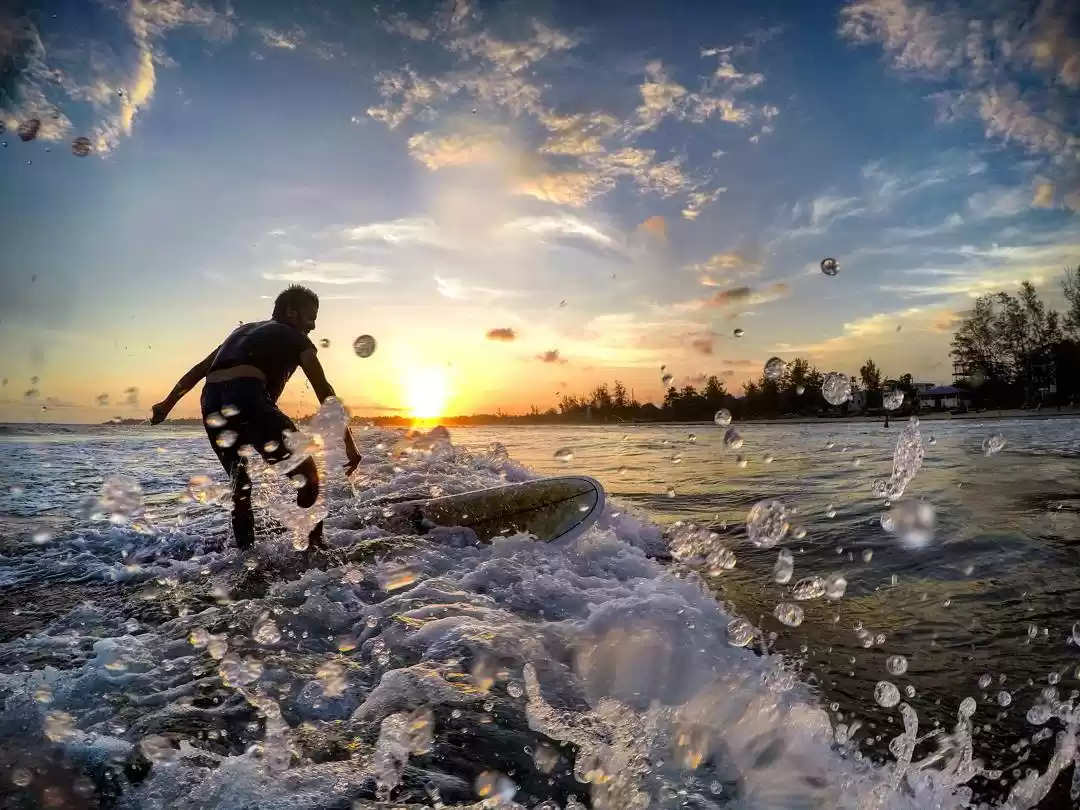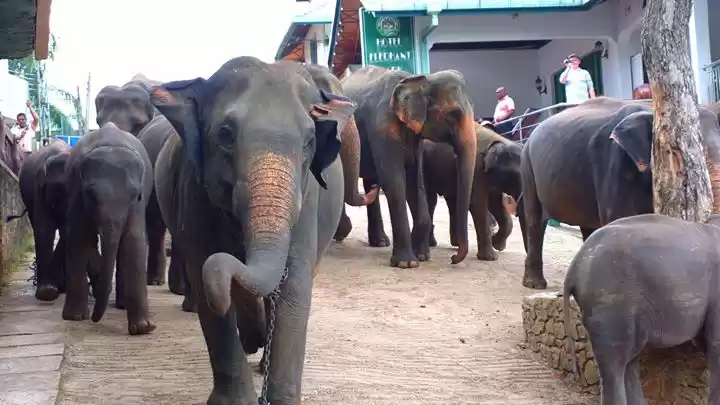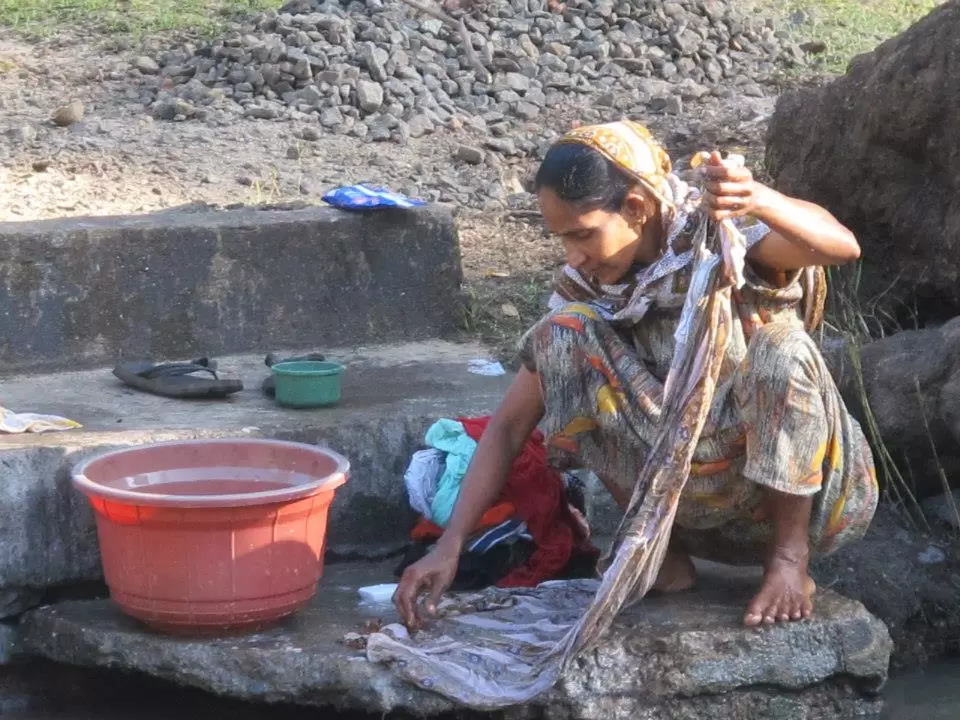Are you looking for a destination that combines history, culture, nature, and spirituality in one? Do you want to discover the origins and teachings of one of the world's oldest and most influential religions? Do you want to experience the beauty and diversity of Sri Lanka's ancient and modern heritage? If you answered yes to any of these questions, then Mihintale is the place for you.
Mihintale is a sacred hill and a revered pilgrimage site for Buddhists, located about 13 km east of Anuradhapura, the ancient capital of Sri Lanka. It is widely regarded as the birthplace of Buddhism in Sri Lanka, as it is the place where King Devanampiyatissa met monk Mahinda and converted to Buddhism in the 3rd century BC. Since then, Mihintale has been a center of Buddhist learning and culture, with the establishment of monasteries, schools, hospitals, and libraries. Mihintale is also a site with a wealth of religious and architectural landmarks, such as stupas, temples, caves, and inscriptions, that showcase the ancient art and architecture of Sri Lanka. Mihintale is also a place with a diverse and scenic landscape of hills, forests, lakes, and rocks, that host a variety of flora and fauna, such as monkeys, peacocks, deer, and birds.
In this article, we will provide you with a comprehensive and informative travel guide to Mihintale, covering its history and significance, its attractions and features, and its travel tips and advice. Whether you are a history buff, a nature lover, a culture enthusiast, or a spiritual seeker, Mihintale has something to offer to everyone. Read on to find out more about this amazing destination and how to plan your trip to Mihintale.
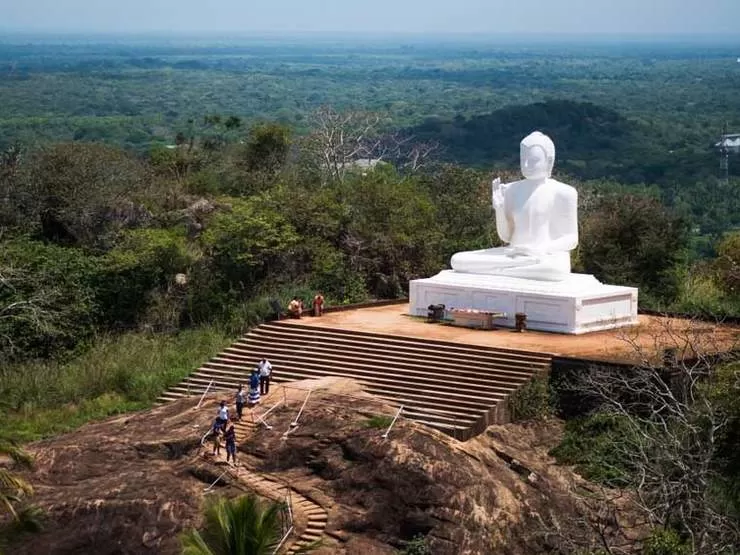
The History and Significance of Mihintale
Mihintale is not just a place, but a story. A story that dates back to over 2,000 years ago, when a historic encounter changed the course of Sri Lankan history and culture. A story that is still alive and celebrated today, by millions of devotees who flock to the hill every year to commemorate the event. A story that is etched in the stones and monuments that dot the hill, bearing witness to the legacy and glory of Mihintale.
The story begins in the year 247 BC, when King Devanampiyatissa, the ruler of Anuradhapura, was hunting a deer on the slopes of Mihintale. He was about to shoot the deer, when he heard a voice calling him by his name and asking him to spare the animal. The voice belonged to Mahinda, the son of Emperor Ashoka of India, who had arrived in Sri Lanka as a Buddhist missionary. Mahinda challenged the king with a series of questions, to test his intelligence and wisdom. The king answered them all correctly, and Mahinda was impressed by his potential. He then revealed his identity and mission, and preached the teachings of the Buddha to the king. The king was convinced by the message of peace and compassion, and decided to embrace Buddhism as his faith. He also declared Mihintale as a sanctuary for all living beings, and donated a large area of land for the establishment of a monastery. This was the beginning of Buddhism in Sri Lanka, which soon spread throughout the island and became the dominant religion and culture.
Mihintale thus became the birthplace of Buddhism in Sri Lanka, and a center of Buddhist learning and culture. Over the centuries, Mihintale developed into a thriving city, with thousands of monks and laypeople living and studying there. Mihintale also became a hub of art and architecture, with the construction of numerous stupas, temples, caves, and inscriptions, that reflected the artistic and architectural styles of different periods and dynasties. Some of the most notable landmarks in Mihintale are:
- Kantaka Cetiya: A stupa built in the 1st century BC, with a unique shape and design, featuring four vahalkadas (frontispieces) decorated with sculptures of elephants, lions, dwarfs, and floral motifs.
- Ambasthala Dagoba: A stupa built in the 2nd century BC, with a tragic history, as it is said to be the site where King Mutasiva's son, Mahatissa, killed his brother, King Mahasiva, to usurp the throne. The stupa is surrounded by a grove of mango trees, which are believed to have grown from the staffs of Mahinda and his companions.
- Mihindu Guha: A cave where Mahinda is said to have resided during his stay in Mihintale. The cave contains a rock-cut image of Mahinda, as well as an inscription that records a donation made by a minister named Anuradha.
- Aradhana Gala: A rock platform where Mahinda is said to have delivered his first sermon to the king and his court. The platform offers a spectacular view of the surrounding countryside, and is also a popular spot for meditation and prayer.
Mihintale is also a sacred and revered pilgrimage site for Buddhists, especially during the Poson Poya festival in June, when thousands of devotees flock to the hill to commemorate the historic encounter between Mahinda and Devanampiyatissa. The festival is marked by various religious and cultural activities, such as chanting, praying, offering flowers and lamps, and decorating the hill with colorful flags and lanterns. The festival is also a time to celebrate the values and virtues of Buddhism, such as peace, compassion, generosity, and wisdom.
Mihintale is thus a place of immense history and significance, where you can learn about the origins and teachings of Buddhism, witness the devotion and faith of the pilgrims, and appreciate the harmony and diversity of life.
The Attractions and Features of Mihintale
Mihintale is not just a story, but a place. A place that offers a wealth of attractions and features, that cater to different tastes and interests. Whether you are interested in ancient ruins, scenic nature, or panoramic views, Mihintale has something to offer to everyone. Here are some of the main attractions and features of Mihintale that you should not miss:
- The Mihintale ruins: As mentioned above, Mihintale is a site with a wealth of religious and architectural landmarks, such as stupas, temples, caves, and inscriptions, that showcase the ancient art and architecture of Sri Lanka. You can explore these ruins and marvel at their beauty and craftsmanship, as well as learn about their history and significance. Some of the other notable ruins in Mihintale are:
- Mahaseya Dagoba: A stupa built in the 1st century AD, and one of the largest in Sri Lanka, with a height of 45 meters and a circumference of 136 meters. The stupa is said to contain the relics of Mahinda and his companions, as well as a hair relic of the Buddha.
- Naga Pokuna: A pond with a stone carving of a five-headed cobra at its entrance, which is believed to have been a bathing place for the monks. The pond is also home to various aquatic animals and plants, such as fish, turtles, and lotuses.
- Kaludiya Pokuna: A pond with black water, which is said to have been used by Mahinda for meditation. The pond is surrounded by a forest, which is a habitat for various wildlife, such as monkeys, squirrels, and birds.
- The Mihintale wildlife: Mihintale is also a place with a diverse and scenic landscape of hills, forests, lakes, and rocks, that host a variety of flora and fauna. You can enjoy the nature and wildlife of Mihintale, by taking a walk, a hike, or a safari, and observe the different species and ecosystems that coexist in harmony. Some of the wildlife that you can encounter in Mihintale are:
- Monkeys: Mihintale is home to two types of monkeys, the toque macaque and the purple-faced langur, which are endemic to Sri Lanka. You can see these monkeys roaming around the hill, especially near the ruins and the ponds, where they feed on fruits, leaves, and flowers. You can also watch their antics and behaviors, such as grooming, playing, and fighting, but be careful not to feed or provoke them, as they can be aggressive and unpredictable.
- Peacocks: Mihintale is also home to the national bird of Sri Lanka, the peacock, which is a symbol of beauty and grace. You can see these peacocks in the forests and fields, where they display their colorful and majestic feathers, and make their loud and distinctive calls. You can also admire their dance and courtship rituals, especially during the mating season, when the males try to impress the females with their plumage and movements.
- Deer: Mihintale is also home to the spotted deer, which is a common and gentle herbivore. You can see these deer in the grasslands and woodlands, where they graze on grass, leaves, and fruits. You can also observe their social and territorial behaviors, such as forming herds, marking their scent, and fleeing from predators.
- The Mihintale views: Mihintale is also a place with a spectacular and panoramic vista of the surrounding countryside, that can be enjoyed from various vantage points. You can admire the views of Mihintale, by climbing the stairs, the rocks, or the - the summit, where you can get a bird's eye view of the entire hill and beyond. You can also witness the sunrise and sunset from these points, and see the sky and the landscape change colors and moods.
Some of the best viewpoints in Mihintale are:
- Mihintale Staircase: A flight of 1,840 steps that leads to the top of the hill, passing by various ruins and monuments along the way. The staircase offers a gradual and scenic ascent, as well as a challenge and a reward for the climbers.
- Mihintale Rock: A massive boulder that stands at the edge of the hill, overlooking the valley below. The rock is accessible by a metal staircase, and offers a thrilling and breathtaking view of the surroundings, as well as a sense of adventure and accomplishment for the visitors.
- Mihintale Summit: The highest point of the hill, where the Mahaseya Dagoba is located. The summit offers a panoramic and majestic view of the entire hill and beyond, as well as a serene and sacred atmosphere for the pilgrims.
Mihintale is thus a place of immense attractions and features, where you can explore the ancient ruins, enjoy the scenic nature, and admire the panoramic views.
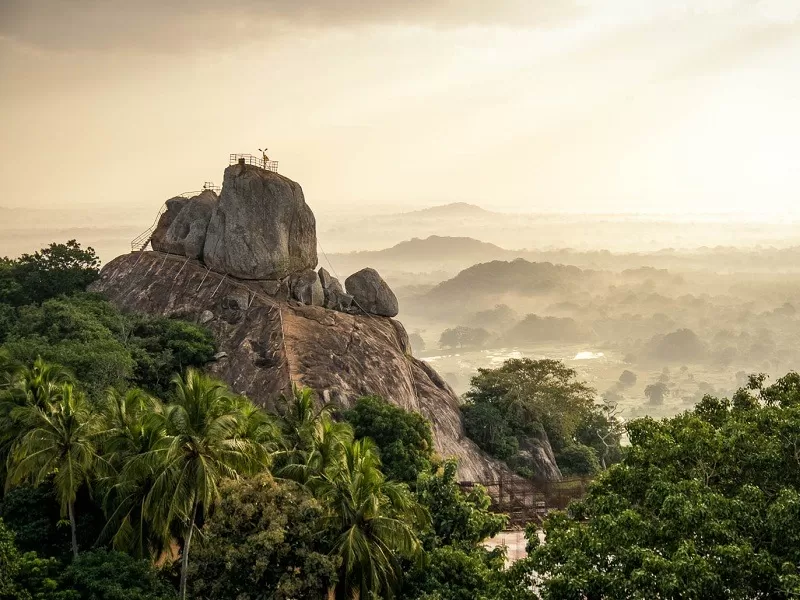
The Travel Tips and Advice for Mihintale
Mihintale is not just a place and a story, but a destination. A destination that requires some planning and preparation, to make the most of your trip and enjoy your experience. Here are some of the travel tips and advice for Mihintale, that can help you with your itinerary, transportation, accommodation, and activities.
- The best time to visit Mihintale: Mihintale can be visited throughout the year, as the weather is generally warm and dry, with occasional showers. However, the best time to visit Mihintale depends on your preference and purpose. If you want to avoid the crowd and the heat, you can visit Mihintale during the off-season, from January to March or from July to September, when the temperature is moderate and the tourist influx is low. If you want to witness the festival and the pilgrimage, you can visit Mihintale during the peak season, from April to June or from October to December, when the temperature is high and the tourist influx is high. However, you should be prepared for the crowd, the noise, and the higher prices during this time. The most important and auspicious month to visit Mihintale is June, when the Poson Poya festival takes place, and the hill is illuminated with lights and decorations. However, you should also be prepared for the heavy traffic, the long queues, and the strict rules during this time.
- The best way to get to Mihintale: Mihintale is located about 13 km east of Anuradhapura, the ancient capital of Sri Lanka, and about 200 km north of Colombo, the modern capital of Sri Lanka. There are several ways to get to Mihintale, depending on your budget, time, and convenience. You can choose from the following options:
- By public transport: You can take a train or a bus from Colombo to Anuradhapura, which takes about 4 to 5 hours, and costs about 300 to 500 LKR (1.5 to 2.5 USD) per person. From Anuradhapura, you can take a local bus or a tuk-tuk to Mihintale, which takes about 30 to 45 minutes, and costs about 50 to 100 LKR (0.25 to 0.5 USD) per person. This is the cheapest and most authentic way to get to Mihintale, but also the slowest and the least comfortable.
- By private vehicle: You can hire a car or a van from Colombo to Mihintale, which takes about 3 to 4 hours, and costs about 15,000 to 20,000 LKR (75 to 100 USD) per vehicle. You can also hire a driver or a guide, who can provide you with more information and assistance along the way. This is the fastest and most comfortable way to get to Mihintale, but also the most expensive and the least adventurous.
- By guided tour: You can join a guided tour from Colombo or Anuradhapura to Mihintale, which takes about a day, and costs about 5,000 to 10,000 LKR (25 to 50 USD) per person. The tour usually includes transportation, entrance fees, lunch, and a guide, who can explain the history and significance of Mihintale and its attractions. This is the easiest and most convenient way to get to Mihintale, but also the least flexible and the least independent.
- The best place to stay in Mihintale: Mihintale is a small town, with limited options for accommodation. You can choose from the following options:
- In Mihintale: You can stay in one of the local guesthouses or hotels in Mihintale, which offer basic facilities and services, such as a bed, a bathroom, a fan, and a breakfast. The prices range from 1,000 to 3,000 LKR (5 to 15 USD) per night. Some of the recommended places are: Mihintale Holiday Home, Mihintale Rest House, and Mihintale Rock View Home Stay. This is the best option if you want to stay close to the hill and experience the local culture and hospitality.
- In Anuradhapura: You can stay in one of the more developed and diverse guesthouses or hotels in Anuradhapura, which offer more facilities and services, such as a pool, a restaurant, a spa, and a wifi. The prices range from 3,000 to 10,000 LKR (15 to 50 USD) per night. Some of the recommended places are: Heritage Hotel, Rajarata Hotel, and Ulagalla Resort. This is the best option if you want to stay in a more comfortable and luxurious place and explore the other attractions of Anuradhapura.
- The best things to do in Mihintale: Mihintale is a place with a lot of things to do, depending on your interest and mood. You can choose from the following activities:
- Explore the ruins: You can explore the ancient ruins and monuments of Mihintale, and learn about their history and significance. You can also admire their beauty and craftsmanship, and take some photos and souvenirs. You will need to pay an entrance fee of 500 LKR (2.5 USD) per person, and wear appropriate clothing, such as long pants and shirts, and remove your shoes and hats, as a sign of respect. You will also need to be careful of the monkeys, who can be playful and mischievous, and avoid touching or feeding them.
- Enjoy the nature: You can enjoy the scenic nature and wildlife of Mihintale, by taking a walk, a hike, or a safari, and observe the different species and ecosystems that coexist in harmony. You can also relax and refresh yourself in the ponds and lakes, and enjoy the cool and calm water. You will need to bring some water, snacks, sunscreen, and insect repellent, and wear comfortable shoes and clothes, as a precaution. You will also need to be respectful of the environment, and avoid littering or harming the animals or plants.
- Admire the views: You can admire the spectacular and panoramic views of the surrounding countryside, by climbing the stairs, the rocks, or the summit, where you can get a bird's eye view of the entire hill and beyond. You can also witness the sunrise and sunset from these points, and see the sky and the landscape change colors and moods. You will need to have some stamina and courage, and be prepared for the steep and slippery steps and rocks. You will also need to have some patience and peace, and avoid making noise or disturbing the others.
Mihintale is thus a destination of immense travel tips and advice, where you can plan your trip and enjoy your experience.
Conclusion
Mihintale is a place that will leave you in awe and wonder, as you discover the history, culture, nature, and spirituality of Sri Lanka. Mihintale is a place that will inspire and enlighten you, as you learn about the origins and teachings of Buddhism, witness the devotion and faith of the pilgrims, and appreciate the harmony and diversity of life. Mihintale is a place that will challenge and reward you, as you explore the ancient ruins, enjoy the scenic nature, and admire the panoramic views.
Mihintale is a place that you should not miss, if you are looking for a destination that combines history, culture, nature, and spirituality in one. Mihintale is a place that you will never forget, if you are looking for a destination that offers a rich and diverse experience of ancient and modern, sacred and scenic, and cultural and natural.
Mihintale is the birthplace of Buddhism in Sri Lanka, and a must-visit destination for anyone interested in the history, culture, and beauty of the island.

